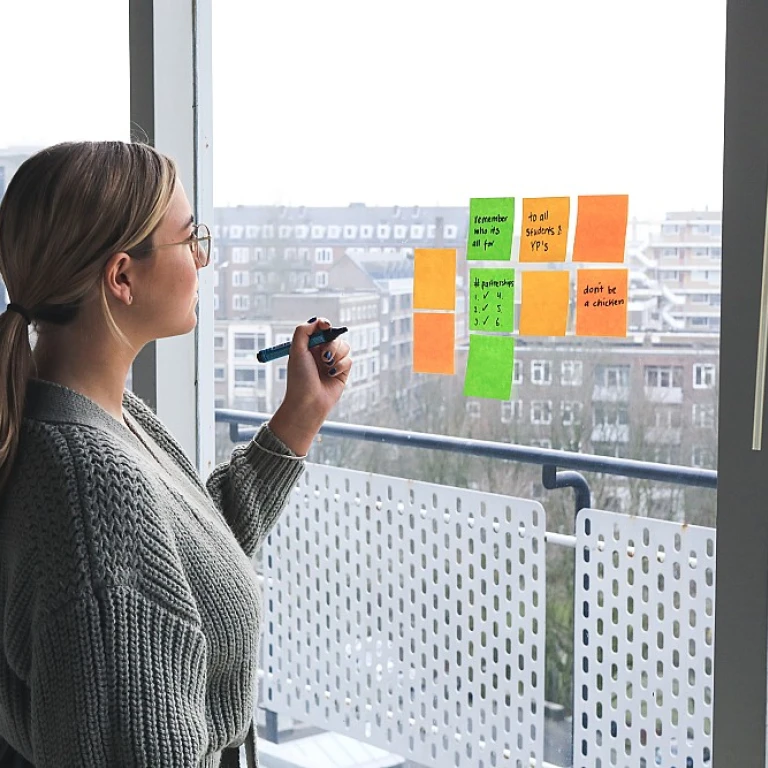Understanding the Importance of Skills Development
The Role of Skills Development in Business Growth
In a world where change is the only constant, businesses need to stay ahead by investing in skills development. This isn't just about training employees; it's about empowering them to meet the challenges of tomorrow. When organizations focus on skills development, they not only enhance employee capabilities but also align with business goals, paving the way for long-term success.
Why Skills Matter for Employees and Organizations
For employees, skills development is more than just a way to climb the career ladder. It's about staying relevant and feeling confident in their roles. For organizations, it's a strategic move to ensure that the workforce is equipped to handle evolving business demands. The right skills can close skill gaps and drive employee engagement, leading to a more productive and motivated team.
Bridging the Skills Gap
Skill gaps can be a significant barrier to achieving business goals. By identifying these gaps, organizations can tailor their learning and development programs to address them. This proactive approach not only benefits the business but also helps employees feel valued and invested in. It's a win-win situation that fosters a culture of continuous learning.
Long-term Benefits of Skills Development
Investing in skills development isn't just a short-term fix. It's a long-term strategy that can lead to sustained growth and innovation. As employees gain new skills, they bring fresh perspectives and ideas to the table, which can drive business growth. Moreover, a strong focus on skills development can enhance employee retention, as individuals are more likely to stay with a company that invests in their growth.
Real-world Success Stories
Consider companies that have successfully implemented skills development strategies. These organizations often report higher levels of employee satisfaction and business performance. By prioritizing skills training and development, they create a workforce that's not only skilled but also adaptable and ready to tackle future challenges.
For more insights on how to effectively manage the employee journey, check out our guide to lifecycle management.
Identifying Key Skills for Future Success
Spotting the Skills That Matter
Every business has its own rhythm, and with it comes a unique set of skills that drive success. While some skills are universal, like communication and problem-solving, others are industry-specific. It's all about knowing what your organization needs to thrive.
To get started, think about your business goals. Are you aiming for innovation, efficiency, or perhaps expanding into new markets? These goals will guide you in identifying the skills that your workforce needs to develop. Consider conducting a skills gap analysis to pinpoint where your team stands and where they need to be. This helps in understanding the current capabilities of your employees and the skills they need to acquire.
Aligning Skills with Future Trends
In today's fast-paced world, it's not just about what's needed now but what's coming next. Keeping an eye on industry trends can provide insights into the skills that will become essential. For instance, with the rise of AI and automation, tech skills are increasingly in demand. However, don't overlook soft skills. As machines take over routine tasks, skills like creativity and emotional intelligence are becoming even more valuable.
Engage with industry experts, attend conferences, and read relevant publications to stay ahead of the curve. This proactive approach will ensure that your organization is not just keeping up but leading the charge.
Listening to Your Employees
Your employees are your most valuable resource when it comes to identifying necessary skills. They are on the ground, facing the daily challenges and can offer insights that might not be immediately apparent from a managerial perspective. Encourage open communication and solicit feedback on what skills they feel are lacking or could be improved.
Consider setting up regular check-ins or feedback sessions where employees can voice their opinions. This not only helps in identifying skill gaps but also boosts employee engagement and morale. When employees feel heard, they're more likely to invest in their own development and the success of the organization.
Collaborating with Learning and Development Teams
Your L&D team is a crucial ally in identifying and developing the skills needed for future success. Work closely with them to design training programs that align with your business goals. They can provide valuable insights into the latest training methods and technologies that can enhance the learning experience.
By collaborating with L&D, you can create a comprehensive development strategy that addresses the skill gaps identified. This partnership ensures that the training programs are not only effective but also relevant to the ever-changing needs of the business.
Creating a Tailored Skills Development Plan
Crafting Your Skill Development Game Plan
Embarking on a journey to elevate your employees' skills involves more than just good intentions; it requires a well-thought-out plan. This step-by-step guide to developing a powerful skill development strategy will keep your workforce competitive and ready for the future. First, assess your current situation by pinpointing the skills gaps within your team. Understand where your organization stands today and what it needs for tomorrow's business goals. This isn't just about identifying what skills are missing but recognizing the talent you're nurturing. Next, set clear and realistic objectives. Aiming for the moon sounds exciting, but it's essential to keep goals achievable. Align your objectives with both immediate needs and long-term aspirations, ensuring that every training program contributes to employee development and overall business strategy. Develop a flexible approach to learning and development by incorporating a mix of training programs. Offering a blend of workshops, online courses, mentoring, and hands-on experiences will cater to different learning styles and keep engagement high. Remember, your strategy should reflect your organization's culture and workforce dynamics. Communication is key—ensure all employees are aware of the opportunities available to them. Encourage suggestions and be open to new ideas about skills development. This fosters a culture of continuous learning, where employees feel valued and invested in their growth. Finally, establish metrics to evaluate the success of your skill development strategy. Regularly reviewing and adjusting programs ensures your business stays on track and continues to offer value to both employees and the organization. Keep an eye on employee engagement and retention rates; positive trends can often be attributed to effective skills training and development. For more on aligning your strategy with employee growth, explore our guide on effective employee growth strategies. A well-planned skill development strategy not only addresses skill gaps but also positions your team to seize new opportunities, ultimately benefiting the entire organization. Whether you're catching up or setting the pace, your proactive approach will pay dividends.Leveraging Technology for Skills Training
Embracing Technology in Training Programs
In the fast-paced world of business, technology isn't just a tool; it's a game-changer. When it comes to skills training, it's about using the right tech to boost employee development. The right technology can turn a regular training session into an engaging learning experience. From virtual reality to AI-driven platforms, the options are endless.Why Technology Matters in Skills Development
Technology helps bridge skill gaps by providing flexible, personalized learning experiences. With online platforms, employees can learn at their own pace, fitting training into their busy schedules. This flexibility boosts employee engagement and ensures that learning development aligns with business goals.Types of Learning Technology
- Learning Management Systems (LMS): These platforms organize and deliver training programs, track progress, and provide feedback. They are essential for any organization looking to streamline its learning and development strategy.
- Virtual Reality (VR): VR offers immersive training experiences, especially useful for skills-based training. It allows employees to practice in a safe environment, making the learning process more effective.
- Mobile Learning: With mobile apps, learning can happen anywhere, anytime. This convenience encourages continuous learning and development.
- Artificial Intelligence (AI): AI can personalize learning experiences by analyzing employee performance and suggesting tailored content to address specific skill gaps.
Implementing Technology in Your Organization
Start by identifying the specific needs of your workforce. What skills are crucial for future success? Once you have a clear picture, choose the technology that aligns with your development strategy. Remember, the goal is to enhance employee development, not overwhelm them with unnecessary tech.Real-Life Example: A Success Story
Consider a company that integrated an LMS with AI capabilities. By analyzing employee performance data, the system suggested personalized training modules, helping employees improve their skills efficiently. The result? A more skilled workforce, ready to meet business challenges head-on. Technology in skills training isn't just about keeping up with trends. It's about empowering your workforce, closing skill gaps, and achieving long-term business goals. So, get the right tech in place and watch your employees thrive!Fostering a Culture of Continuous Learning
Building a Lifelong Learning Environment
Creating a space where employees feel encouraged to learn continuously is like planting seeds for future growth. It’s not just about setting up training programs; it’s about nurturing a mindset where learning is part of the daily work experience. When employees see that their growth is a priority, they become more engaged and motivated, driving the organization closer to its business goals.
Encouraging Employee Engagement Through Learning
Engagement is key to a successful skills development strategy. Employees who feel their company invests in their learning are more likely to stick around. Think of it as a two-way street: as the organization invests in employee development, employees, in turn, contribute more effectively to the business. By offering a variety of learning experiences, from workshops to online courses, companies can cater to different learning styles and preferences, making the process more inclusive and effective.
Aligning Learning with Business Goals
When it comes to skills training, alignment with the organization’s objectives is crucial. This means identifying skill gaps that could hinder progress and addressing them through targeted development programs. By linking skills development directly to business goals, employees understand the importance of their learning journey and how it impacts the company’s success. This strategic approach helps in creating a more competent and confident workforce.
Using Technology to Enhance Learning
Technology is a game-changer in the learning development space. With tools like learning management systems and mobile apps, employees can access training materials anytime, anywhere. This flexibility not only makes learning more accessible but also more engaging. Organizations that leverage technology in their learning strategies often see a boost in employee participation and satisfaction.
Sharing Success Stories
Nothing inspires more than real-life success stories. Sharing how skills development has helped employees advance in their careers can motivate others to take their learning seriously. It also showcases the organization’s commitment to talent development. Encourage employees to share their learning experiences and achievements, creating a culture of continuous improvement and collaboration.
Measuring the Impact of Skills Development Initiatives
Evaluating the Fruits of Your Labor
Once you've set your skills development strategy in motion, it's vital to know if it's hitting the mark. Measuring the impact of your initiatives is like checking the pulse of your workforce's growth. It ensures that your training programs are not just ticking boxes but truly helping your employees and your business reach their goals.
Setting Clear Benchmarks
Start by defining what success looks like for your organization. Are you aiming to fill specific skill gaps, boost employee engagement, or meet certain business goals? Having clear benchmarks will guide you in evaluating the effectiveness of your training development efforts. This is where the rubber meets the road, as your goals will steer the direction of your skills training and development programs.
Gathering Feedback and Data
Feedback from employees is gold. Regularly ask them about their learning experiences and the skills they've gained. Are the training programs resonating with them? Are they feeling more equipped to tackle their roles? Combine this qualitative feedback with quantitative data, like performance metrics and productivity levels, to get a comprehensive view of your strategy's impact.
Monitoring Long-Term Growth
Skills development is a marathon, not a sprint. Track progress over time to see how your workforce evolves. Are your employees growing into the roles you envisioned? Is there a noticeable improvement in their performance and contribution to the organization? Long-term monitoring will help you refine your strategies and ensure continuous learning becomes part of your company culture.
Adapting and Evolving
The business world is always on the move, and your skills strategy should be too. Be ready to adapt your programs based on the results you gather. If certain training methods aren't delivering the desired outcomes, switch gears and explore new avenues. Remember, a flexible strategy is a successful one.
In the end, measuring the impact of your skills development initiatives is about ensuring your workforce is not just keeping up but thriving. It's about creating an environment where learning and development are embedded in the DNA of your organization, driving both employee and business success.








